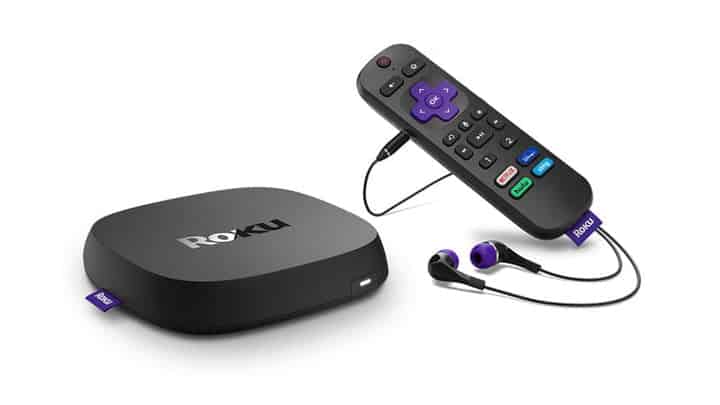Roku TV is a smart TV brand that offers users an easy-to-use and integrated brilliant television experience. Born from a collaboration between Roku Inc. and various television manufacturers, these devices provide access to a vast range of content, user-friendly navigation, and advanced features. This article explores what a Roku TV is, how it operates, its features, benefits, drawbacks, and everything else you need to know about this popular streaming-centric television system.

What is Roku TV?
Roku TV is a unique blend of hardware and software designed to offer an all-inclusive, user-friendly streaming experience. It takes the intelligent TV concept further by integrating the popular Roku streaming platform directly into the television set, eliminating the need for an external streaming device. It’s a one-stop solution for consumers who love internet TV services like Netflix, Hulu, Amazon Prime, and countless other content sources.
Different television manufacturers produce the hardware for Roku TV, including famous names like TCL, Hisense, Sharp, and RCA. Despite this variety, all Roku TVs share the same user interface and capabilities, powered by the Roku operating system.
How Does Roku TV Work?
When you switch on a Roku TV, you are greeted with a home screen that brings together different content sources in one place. This home screen includes icons for various streaming services, inputs for devices like game consoles and Blu-ray players, and settings.
Instead of switching between different inputs for various devices and services, you can navigate to any of them directly from this unified home screen. This seamless integration helps make Roku TVs intuitive and straightforward, even for those who might not be tech-savvy.
What Can You Watch on a Roku TV?
Roku TVs offer a massive range of viewing options, boasting access to over 500,000 movies and TV episodes from free and paid sources. Roku’s platform supports virtually every significant streaming service, including Netflix, Hulu, Amazon Prime Video, Disney+, HBO Max, and YouTube.
In addition to this, Roku TVs also include a feature called The Roku Channel, which offers a selection of free, ad-supported movies and TV shows. Roku TVs also support live TV; they can be connected to cable boxes or antennas for live TV access.
Moreover, with Screen Mirroring and Casting features, Roku TV users can display content from their smartphones, tablets, or computers onto the TV screen.
Roku TV Features
Roku TV stands out for its user-friendly features and functionality. Here are some of its notable features:
1. Simple, Intuitive Interface: Roku TV’s interface is straightforward. All your inputs and apps are in one place, and moving between them is seamless.
2. Massive App Selection: With access to the Roku Channel Store, users can choose from thousands of free and paid channels, including music, games, news, and specialty.
3. Voice Control: Roku TV’s remote includes voice control, allowing users to search for content, control playback, launch apps, and more using voice commands. Some Roku TVs are also compatible with Amazon Alexa and Google Assistant.
4. 4K and HDR Support: Many Roku TVs offer 4K resolution and HDR, providing enhanced picture quality for compatible content.
5. Mobile App: The Roku mobile app turns your smartphone or tablet into a streaming companion. It offers functionalities like private listening, voice search, and remote control.
6. Automatic Software Updates: Roku TVs automatically update themselves, ensuring they always have the newest features and security fixes.
The Pros and Cons of Roku TV
Pros:
- Ease of use: Roku TVs have a straightforward, intuitive interface, which makes it easy for users to find and watch their favorite content.
- Wide Range of Content: With access to thousands of apps, Roku TV users have access to a wide range of content, from popular streaming services to niche channels.
- Affordability: Many Roku TVs are budget-friendly, making them an excellent choice for those looking to enter the world of smart TVs without breaking the bank.
Cons:
- Varying Picture Quality: While some high-end Roku TVs offer excellent picture quality, the picture quality on cheaper models may not be as good.
- Ad-Supported: Roku’s interface includes ads, which some users may find disruptive.
- Limited Customization: The Roku home screen offers limited customization options compared to other innovative TV platforms.
In conclusion, Roku TV offers viewers a complete and easy-to-use streaming experience, combining a wide range of content with a user-friendly interface. Whether you’re a cord-cutter seeking a comprehensive streaming solution or an affordable, intelligent TV option, Roku TV is worth considering. However, potential buyers should consider their needs, preferences, and budget before deciding.
Please read our Roku TV tips:
- What is Roku TV?
- How to Connect Roku Remote to TV?
- Does Roku TV Have Bluetooth?
- How to Restart Roku TV?
- Where is the IP address on a Roku TV?
- How to Sync Roku Remote to TV?
- How to Screen Mirror on Roku TV?
- How to Change Roku Name?
- How To Connect Airpods To Roku TV?
- Do You Need Internet for Roku?
- How to Fix Roku TV Black Screen?
- Why is My Roku Blinking?
- Why Does my Roku TV keep Turning Off?
- How to Turn Off Voice on Roku? – Turn Off the Narrator On Roku
- Facebook Ads to Get Followers! - December 27, 2024
- ClickUp vs. Slack - December 20, 2024
- Mastering E-Commerce Analytics: A Blueprint for Success





